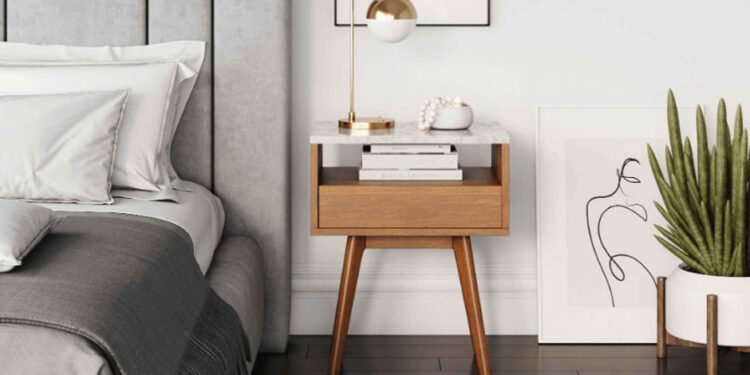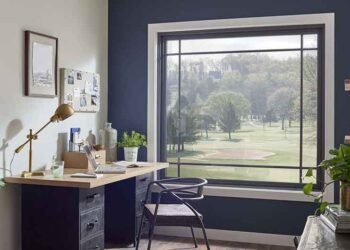Introduction to Side Tables
Side tables, often overlooked as mere supplementary pieces, hold the potential to transform any room with their subtle charm and functionality. These compact furniture items are not just about filling space but can also serve as focal points or complementary accents within a room’s decor. Understanding how to leverage side tables effectively can elevate the aesthetic and utility of an entire space.
The Evolution of Side Tables in Interior Design
Side tables have come a long way from their humble beginnings as simple wooden stands. Historically, they were primarily functional, serving as convenient spots for holding candles or small items. Over time, they evolved into more sophisticated pieces that reflect both style and innovation.
Historical Perspective
In the 18th century, side tables began to take on more decorative roles, adorned with intricate carvings and luxurious finishes. By the mid-20th century, designers were experimenting with new materials like glass and metal, pushing the boundaries of traditional design.
Modern-Day Significance
Today, side tables are integral components of interior design schemes across various styles—from minimalist to eclectic. They serve multiple purposes, from providing a surface for lighting and decor to acting as a visual anchor within a room.
Choosing the Right Side Table for Your Space
Selecting the perfect side table involves more than just picking a piece that fits physically into your space; it requires consideration of form, function, and aesthetics.
Size and Scale
– Proportions: Ensure your side table is proportionate to the surrounding furniture. A small table next to a large sofa may look off-balance.
– Height Considerations: Ideally, the height of your side table should be in line with or slightly below the armrest of the adjoining seating.
Style Alignment
– Complementary Style: Choose a side table that complements the overall theme of your room—whether it’s modern, rustic, or vintage.
– Contrasting Elements: Use side tables as an opportunity to introduce contrasting elements or materials for visual interest.
Material Matters: Exploring Different Side Table Materials
The material of a side table can significantly impact its look and feel within a space.
Common Materials
- Wood: Offers warmth and versatility; available in various finishes from oak to walnut.
- Metal: Provides a sleek, modern touch; often used in minimalist or industrial designs.
- Glass: Creates an airy feel; perfect for smaller spaces as it doesn’t block visual lines.
- Marble: Adds luxury and elegance; pairs well with contemporary interiors.
Considerations for Material Selection
– Durability: Choose materials based on usage frequency and potential wear.
– Maintenance: Consider how much upkeep is required for each material type.
Versatility and Functionality of Side Tables
Side tables are not just decorative—when chosen thoughtfully, they can enhance functionality within any room.
Multifunctional Designs
– Storage Options: Select side tables with built-in storage compartments or shelves to maximize utility.
– Convertible Features: Some designs allow transformation into workstations or dining surfaces.
Enhancing Accessibility
Positioning side tables strategically can improve accessibility, making it easier to reach necessities like books or remote controls from seating areas.
Styling Tips for Side Tables
Styling a side table effectively can elevate its presence within a room.
Layered Decor Approach
– Lighting: Place a stylish lamp on your side table to add height and illumination.
– Books and Artifacts: Stack books or display art pieces to add personality.
– Plants: Incorporate greenery for texture and color contrast.
Balancing Act
Maintain balance by arranging items in odd numbers and varying heights—this creates visual interest without cluttering the space.
Side Tables in Different Rooms: A Room-by-Room Guide
The role of side tables varies across different rooms in the home.
Living Room Essentials
In living rooms, side tables serve as convenient surfaces near sofas or chairs for beverages, remotes, or decor items like vases and sculptures.
Bedroom Necessities
Used as nightstands on either side of the bed, side tables offer functionality through additional storage or surfaces for alarm clocks and reading lamps.
Hallway Accents
Small but impactful, side tables can transform narrow hallways into styled areas by serving as platforms for statement decor pieces or potted plants.
Unique Side Table Trends to Watch
Staying updated on trends helps keep your interior design fresh and modern.
Trending Designs
– Sculptural Forms: Designers are exploring asymmetric and sculptural shapes that make bold statements.
– Mixed Materials: Combining materials such as wood with metal or stone offers unique textural contrasts.
– Color Pops: Brightly colored side tables are being used as accent pieces in neutral settings.
Case Studies: Successful Use of Side Tables in Design Projects
Examining real-life applications provides valuable insights into effective styling techniques using side tables.
Home Kode Project Insights
In recent projects by Home Kode, clever use of mirrored side tables amplified natural light while adding depth—a testament to their strategic placement enhancing spatial dynamics.
Urban Loft Transformation
A small urban loft utilized nesting side tables that could be easily rearranged to accommodate social gatherings without compromising floor space—demonstrating adaptability in compact environments.
Conclusion: Transforming Spaces with Side Tables
Side tables possess an undeniable ability to enhance both functionality and aesthetics when chosen thoughtfully and styled creatively. Their adaptability across different rooms makes them indispensable elements in interior design. Whether used as understated supports or striking focal points, these small pieces can indeed make a big impact on any space they inhabit. Understanding their potential allows homeowners and designers alike to transform ordinary rooms into captivating environments filled with character and convenience.












